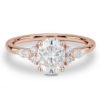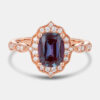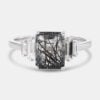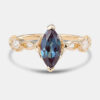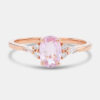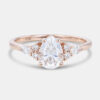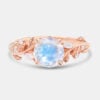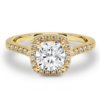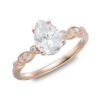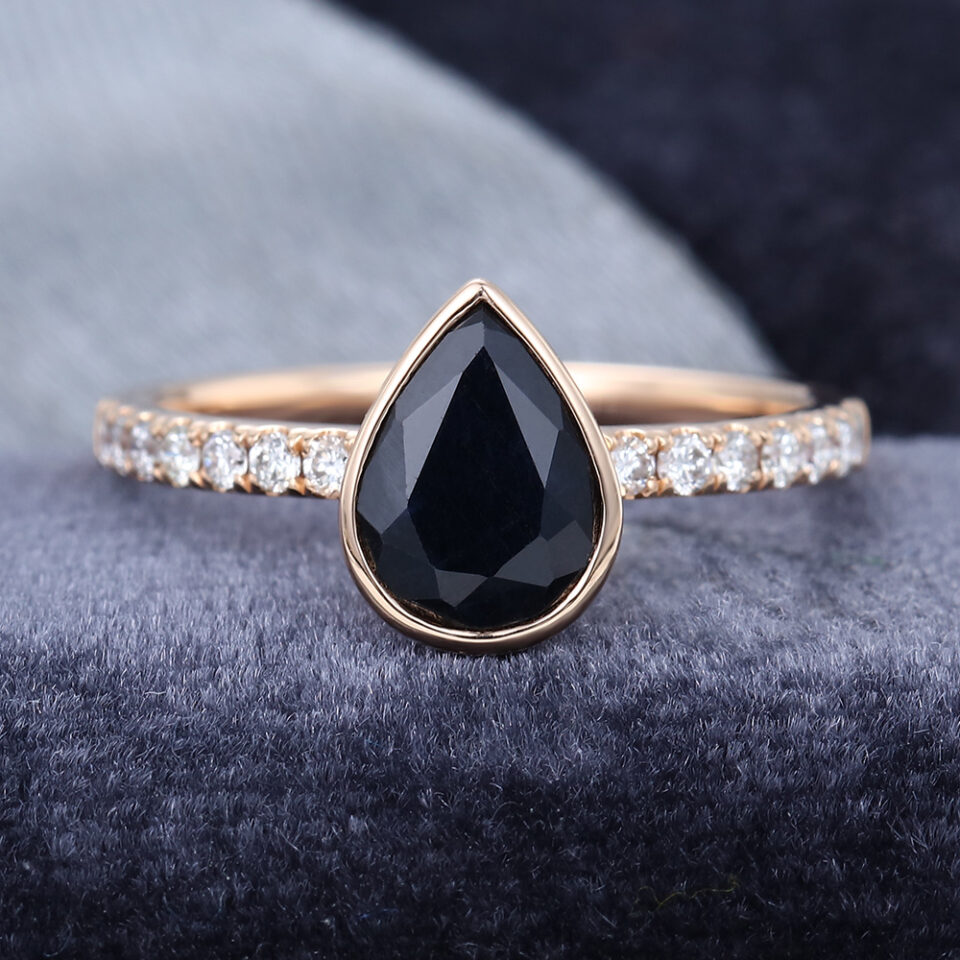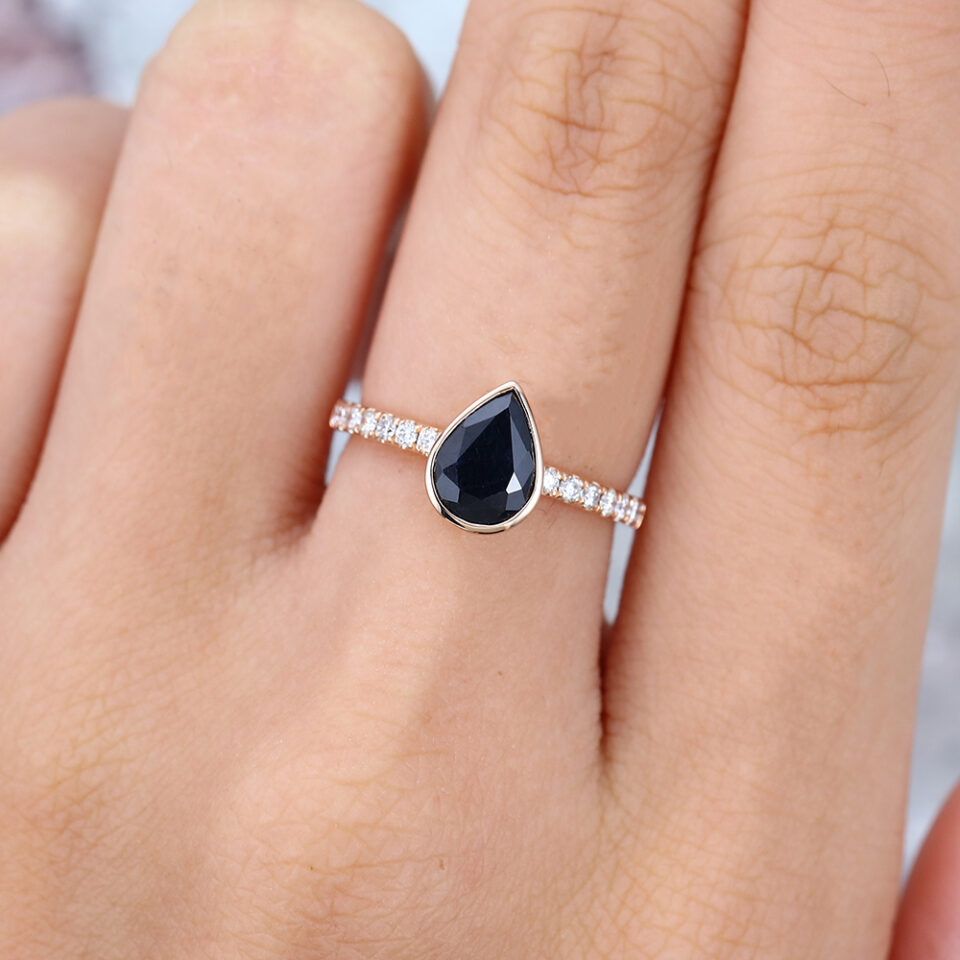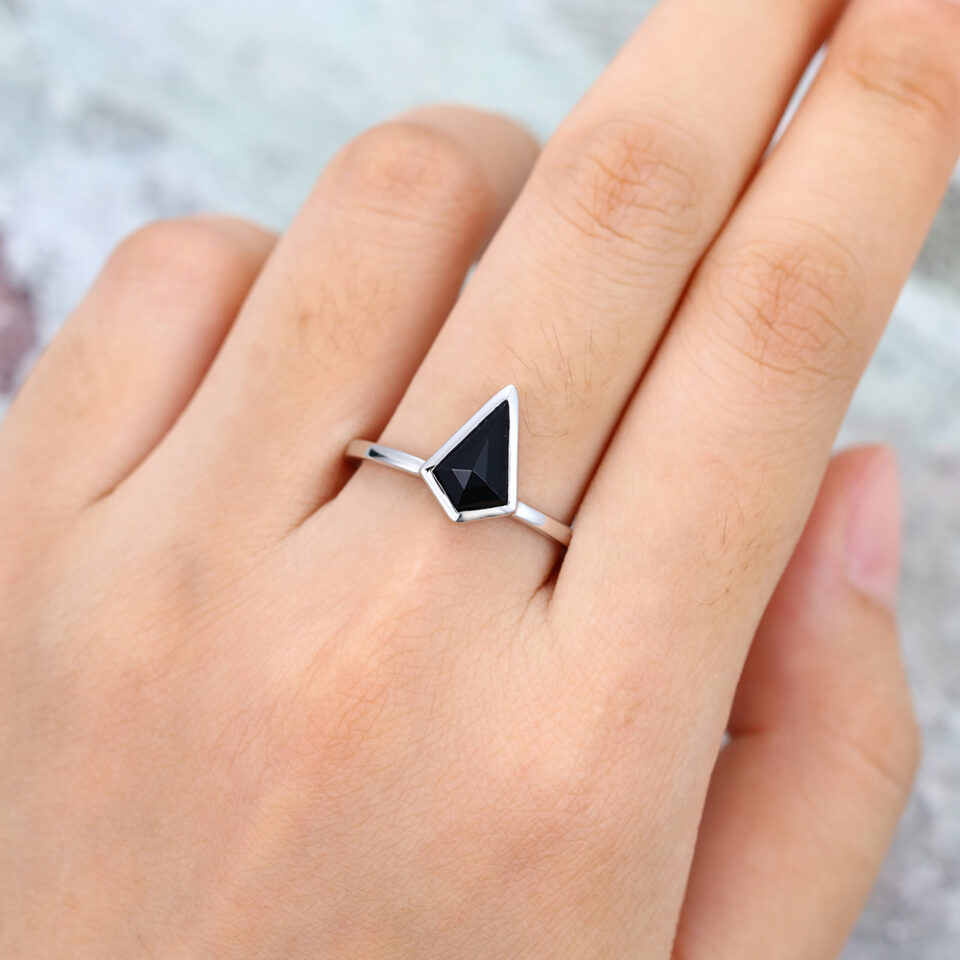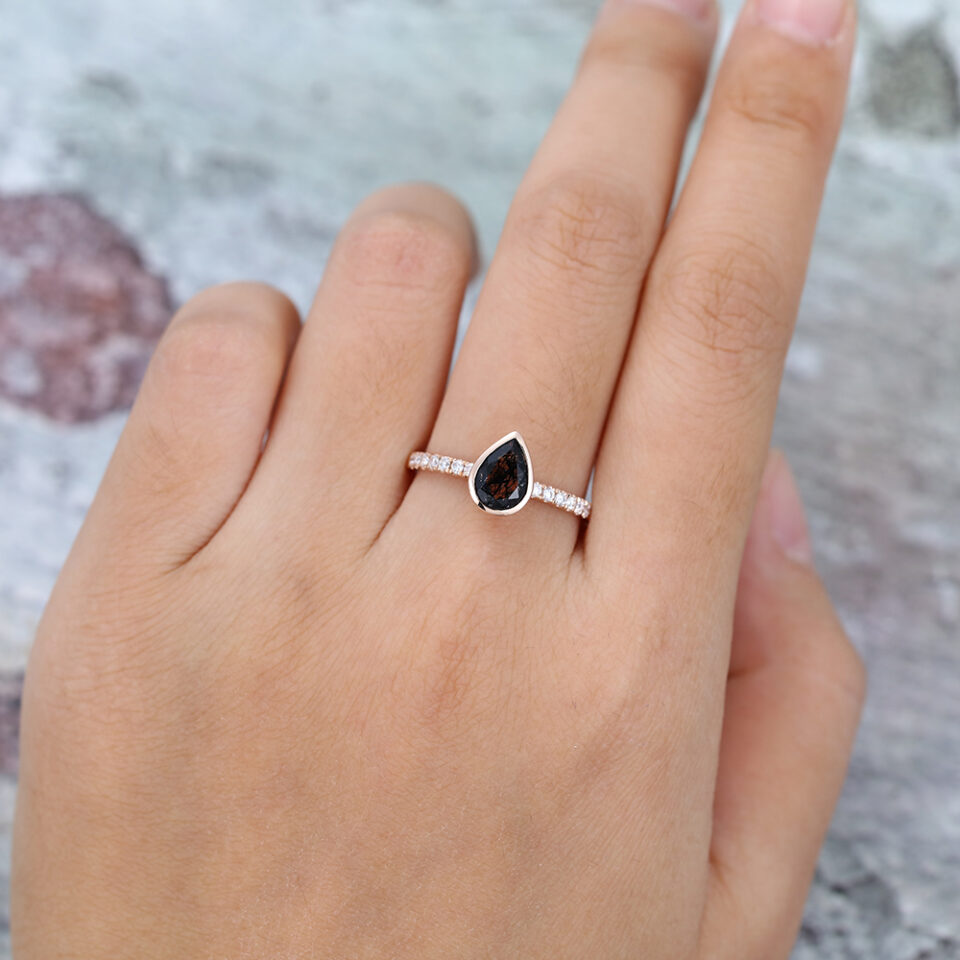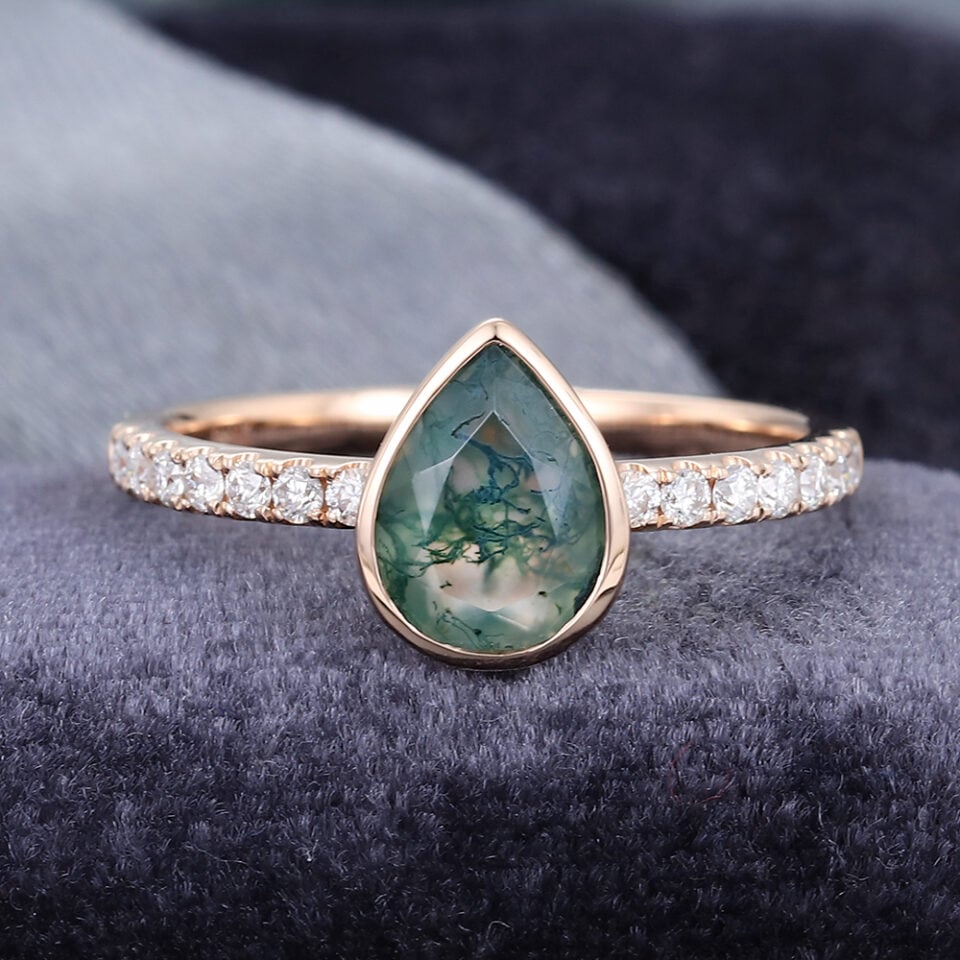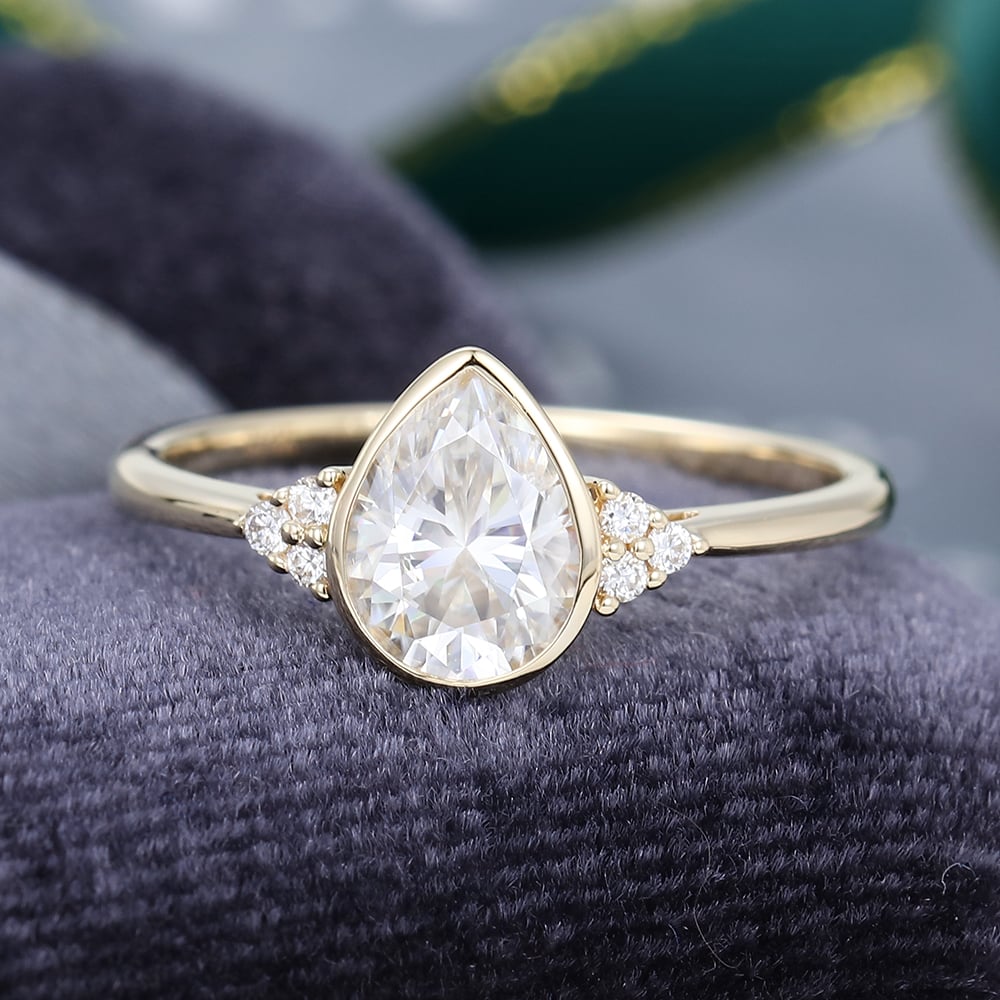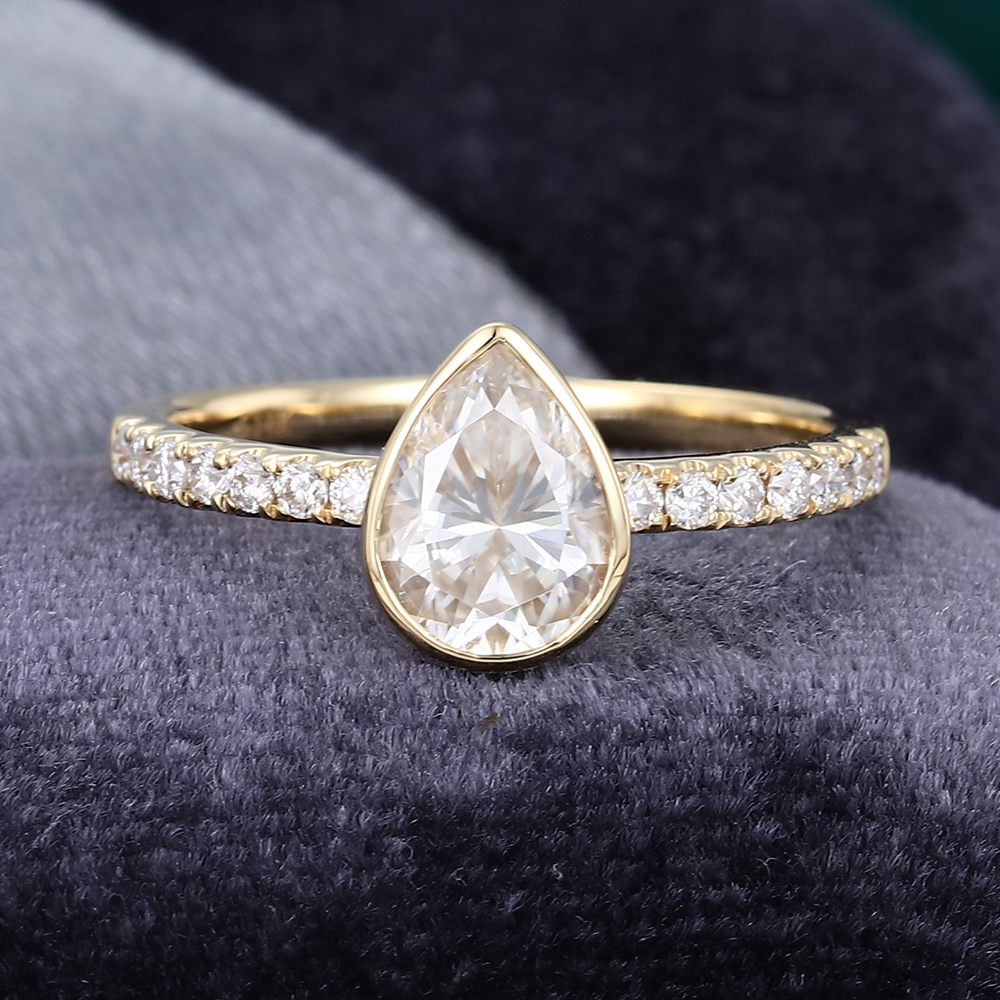Discover timeless elegance with our exquisite collection of bezel engagement rings. Known for their durability and sleek design, bezel settings encircle your chosen gemstone with a protective metal rim, offering both security and style. Explore our selection and find the perfect ring to symbolize your enduring love.
Bezel
Showing all 10 results
A bezel engagement ring is a type of ring setting in which a metal rim, often made of precious metal like gold or platinum, surrounds and secures the center gemstone. This metal rim forms a protective and decorative border around the stone. Bezel settings can come in different variations:
Full Bezel: In a full bezel setting, the metal rim fully encircles the center stone, holding it securely in place. This offers a high level of protection to the gemstone and is an excellent choice for people with active lifestyles.
Partial Bezel: A partial bezel setting features a metal rim that partially surrounds the gemstone, leaving some parts of the stone exposed. This style can showcase more of the stone’s brilliance and is often chosen for its contemporary and elegant appearance.
Bezel engagement rings are known for their durability and modern, sleek look. They offer excellent protection to the center stone and are less likely to catch on clothing or other objects compared to prong settings. Bezel settings can be used with various types of gemstones, including diamonds, sapphires, emeralds, and more. They come in a variety of designs, from classic to contemporary, making them a versatile choice for engagement rings.
Bezel Engagement Rings FAQ
The term “bezel” in the context of jewelry settings, particularly for gemstones in rings, comes from the Old French word “besel,” which means a “little rim” or “edge.” The bezel setting, as its name suggests, is a type of rim or edge that surrounds the gemstone. This setting style has been used for centuries and is known for its protective and secure design, where the rim or edge encircles the gemstone, holding it in place and protecting it from damage.
The popularity of bezel rings, like any jewelry trend, can vary over time. While they may not always be considered the latest trend, bezel-set rings have enduring appeal due to their durability, contemporary look, and the protection they offer to gemstones. They are often chosen by individuals who appreciate a timeless, low-profile setting. Ultimately, the trendiness of bezel rings may depend on personal preferences and fashion cycles.
Bezel-set engagement rings are generally considered more secure than other settings, such as prong settings, because the bezel setting encircles the entire perimeter of the gemstone, holding it firmly in place. Here are some advantages of bezel-set rings in terms of security:
Protection: Bezel settings offer excellent protection to the center gemstone, as the metal surrounds and cradles it entirely. This reduces the risk of the stone chipping, breaking, or becoming dislodged due to accidental impacts or daily wear and tear.
Durability: Bezel-set rings are known for their durability. The metal surrounding the gemstone provides added strength and stability, minimizing the chance of damage to the stone.
Low Maintenance: Bezels require minimal maintenance because there are no delicate prongs to inspect or tighten periodically. This makes bezel-set rings a good choice for those with active lifestyles.
Low Profile: Bezel settings can be designed with a low profile, which means the gemstone sits closer to the finger. This can reduce the likelihood of the stone catching on objects or getting in the way of daily activities.
Uniform Appearance: Bezel settings can create a sleek and modern look while providing even and secure support for the stone. The bezel can be crafted in various styles, from classic to contemporary, to suit different aesthetic preferences.
While bezel settings offer greater security for the gemstone, they also have some trade-offs to consider. Some people prefer the appearance of prong-set rings because prongs allow more of the stone to be visible and can enhance its brilliance. Bezel settings can sometimes make the stone appear smaller due to the metal border.
Yes, it is typically possible to replace a stone on a bezel-set ring, just as you can with other types of ring settings. The process for stone replacement on a bezel-set ring usually involves the following steps:
Remove the Old Stone: The jeweler will carefully remove the old or damaged gemstone from the bezel setting. This might require some delicate prying or cutting, depending on how the stone is held in place.
Select the New Stone: You’ll need to choose a new gemstone that matches the size, shape, and type of the original stone. If you’re replacing a diamond, for example, it’s essential to match the cut, color, and clarity as closely as possible.
Prepare the New Stone: The new stone will be prepared for setting, which may involve cutting and shaping it to fit the bezel setting properly.
Set the New Stone: The jeweler will carefully set the new stone in the bezel. This involves securing it in place within the metal rim.
Secure and Finish: The jeweler will make sure the new stone is securely and evenly set. Any necessary adjustments will be made to ensure it’s properly aligned and polished to match the ring’s overall appearance.
Inspect and Clean: The ring will be thoroughly inspected to ensure that the new stone is set securely and that there are no visible flaws or issues. It may also be cleaned and polished to bring out its luster.
Re-Appraise (Optional): If the ring has significant value, such as in the case of a diamond engagement ring, you may want to have it re-appraised to reflect the change in the gemstone.
It’s important to note that the feasibility of replacing a stone on a bezel-set ring can depend on the type of stone, the setting’s design, and the craftsmanship of the jeweler. It’s always a good idea to consult with a professional jeweler or a gemologist to assess the best approach for replacing a stone on your specific ring. Additionally, if the ring holds sentimental value, make sure to work with a trusted jeweler who specializes in this type of work to ensure that the process is done correctly and that the replacement stone matches the original one as closely as possible.
Repairing scratches on a bezel ring depends on the type of metal used and the severity of the scratches. Here are some general steps to address scratches on a bezel ring:
Materials and Tools You’ll Need:
- Mild liquid soap or jewelry cleaner
- Warm water
- Soft cloth or microfiber cloth
- Soft-bristle toothbrush
- Jewelry polishing cloth
- Polishing compound (for deep scratches, if necessary)
- Metal-specific polishing compound (e.g., silver polish, gold polish)
- Soft leather or chamois cloth
Steps:
Assess the Severity of Scratches: Examine the scratches on the bezel ring. If they are minor surface scratches, you may be able to buff them out with basic cleaning and polishing. If the scratches are deep, you may need to consider professional repair.
Cleaning: Start by cleaning the entire ring to remove dirt and debris. Mix warm water with a few drops of mild liquid soap or use a jewelry cleaner. Soak the ring for a few minutes and then use a soft-bristle toothbrush to gently scrub around the bezel setting and the scratched area.
Polishing: Use a jewelry polishing cloth to gently buff the scratched area in a circular motion. For minor scratches, this might be enough to diminish their appearance. Be sure to follow the manufacturer’s instructions on the polishing cloth.
Deeper Scratches: If the scratches are deeper and not easily removed with a polishing cloth, you may need to use a metal-specific polishing compound. Apply a small amount of the compound to a clean, soft cloth and gently buff the scratched area. Be careful not to overdo it, as you could remove too much metal.
Rinse and Dry: Rinse the ring thoroughly to remove any remaining polishing compound, and then dry it with a soft cloth.
Final Polish: Use a soft leather or chamois cloth to give the entire ring a final polish, ensuring a consistent finish.
Professional Help: If the scratches are still visible or if you’re uncomfortable attempting to repair them on your own, consider taking the ring to a professional jeweler. They have the expertise and tools to address more severe scratches and restore your ring to its original condition.
Remember that the effectiveness of DIY scratch repair depends on the type of metal, the depth of the scratches, and your skill level. It’s important to be cautious and not remove excessive metal while attempting to fix scratches, especially with valuable or sentimental pieces. When in doubt, consult a professional jeweler for the best results.



